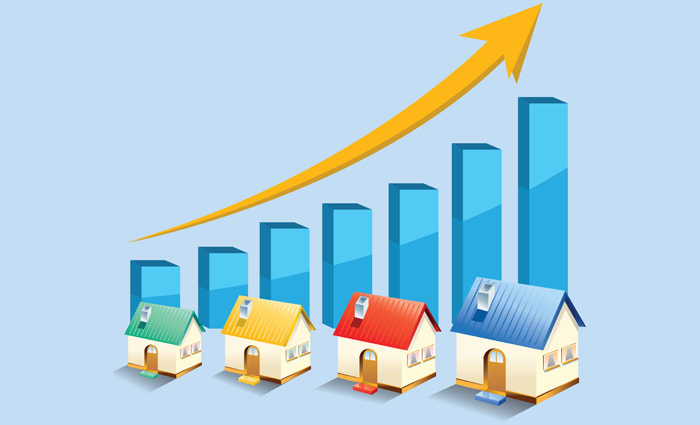Does Australia really have the most overvalued property in the world?
GUEST OBSERVATION
Home median prices rose 4.2% over the quarter to 31 August according to RP Data and this is reigniting the debate over whether prices are now too high.
Price movements over the quarter were +5.0% for Sydney, +6.4% for Melbourne, but around +1% for the rest. It was a surprise to see Melbourne outperforming Sydney during the quarter.
More capitals now have a median price within a stones’ throw of $500,000 including Melbourne, Perth, Darwin and Canberra. Brisbane still looks relatively cheap at $445,000, with Adelaide and Hobart lower. Sydney is the most expensive at $650,000.
This was the strongest winter performance since 2007 says RP Data, though it followed a negative result in May so there is an element of bounce back in the numbers.
Over the year to 31 August, Sydney is up 20.9%, Melbourne is up 15.6%, Brisbane 10.4%, Adelaide 10.6%, Darwin 12.0%, Perth 8.0%, Hobart 8.4%, Canberra 6.0%. In the case of Canberra much of that happened in the last quarter.
Melbourne growth has been surprisingly strong, considering the plentiful supply and the level of new unit construction. It also has the lowest rental yield, being 3.2% on houses, 4.2% on units, which the Economist has used to suggest the market is overpriced (see below).
Over five years, Sydney and Melbourne prices have risen by around half.
According to RP Data research director Tim Lawless, Sydney and Melbourne housing markets are driving these two tier conditions. “Over the latest growth cycle we have seen Sydney dwelling values increase by 27.2% and Melbourne values up by 19.5%. Sydney and Melbourne were also the strongest performing cities during the 2009/10 growth cycle. Since the beginning of 2009, we have seen values rise by a cumulative 50.1 per cent and 46.1% respectively in Sydney and Melbourne. Looking at the remaining state capitals over the same time frame, the next best performer was Perth where values are now 15% higher, followed by Adelaide at 9.9%, Brisbane with 5.3%.”
The inevitable question is what prices will do in the next year?
It seems that the pace of growth must slow down. If it doesn’t then the RBA will be considering raising interest rates, assuming that macro prudential tools to curtail lending are not introduced. And this at a time when the RBA would like to reduce rates in order to lower the exchange rate and stimulate the economy. It is between a rock and a hard place.
According to an article in The Economist (30 August, 2014 edition):
- Australia has one of the most over priced housing markets in the world. However, this is based on a couple of simplistic measures, being price versus rents, and price versus income.
- Measured against rents, they assert that Australia as a whole is 55% overvalued, the only markets exceeding this being New Zealand, Canada, Belgium and Hong Kong.
- Measured against income, they assert that Australia is 33% overvalued, the highest figure in the world.
Given the disparity of price growth in our cities, this implies that Sydney and Melbourne are way overvalued, while the other capital cities are a little above fair value.
But is this an accurate way to measure under/overvaluation?
Against income, The Economist says that Australia is 33% overvalued. But at the other end of the scale, they also say that China is 38% undervalued.
So should we be selling our Australian houses and rushing to buy in China instead? Few would agree with that, indeed, Chinese buyers are conspicuous in buying Sydney real estate, but the question gets us to focus on the major driver of prices: supply versus demand.
China may well be undervalued by comparison with incomes, but another factor is at work. The market is considerably oversupplied, with plenty of reports highlighting the amount of constructed yet empty apartment space in and around the major cities. So the excess of supply over demand has kept prices lower by comparison with incomes.
In Australia, we have the opposite equation: supply has not kept up with demand, and excess demand is driving prices up. To the extent that demand is supporting prices, there is a good argument to say that our prices are not too high.
Rising prices should be a signal to increase supply. Indeed, levels of new home construction are improving, but not at the pace that would reduce prices. Supply is relatively inelastic, with impediments to new supply including lack of available land (where it is wanted) and planning limitations.
This can easily explain why Sydney prices have been increasing at the fastest pace. Simplistically, the demand is for inner city housing, while supply is most elastic on the metro fringes.
Melbourne is something of an enigma. It has plentiful supply of new land and home packages, especially in the west, and the level of new apartment construction for inner city locations is high enough to cause a lively debate about whether too many are being constructed. If supply is greater than demand, then Melbourne price growth should be subdued. The fact that it continues at a strong pace suggests that demand is growing faster than supply.
Figures of population growth are always a year out of date, but it suggests that inbound population growth is continuing in Melbourne, despite the risks to employment levels in coming years.
Buyers seem to be assuming, reasonably enough, that interest rates are not going to change in the next year. Everyone likes buying into a trend, so growth tends to become self-fulfilling in the short term. While we expect growth levels to moderate in the coming year, we consider the measures used by The Economist to be rather simplistic and that prices are not as overvalued as they report.
Linda Phillips is national research manager with Propell National Valuers.
